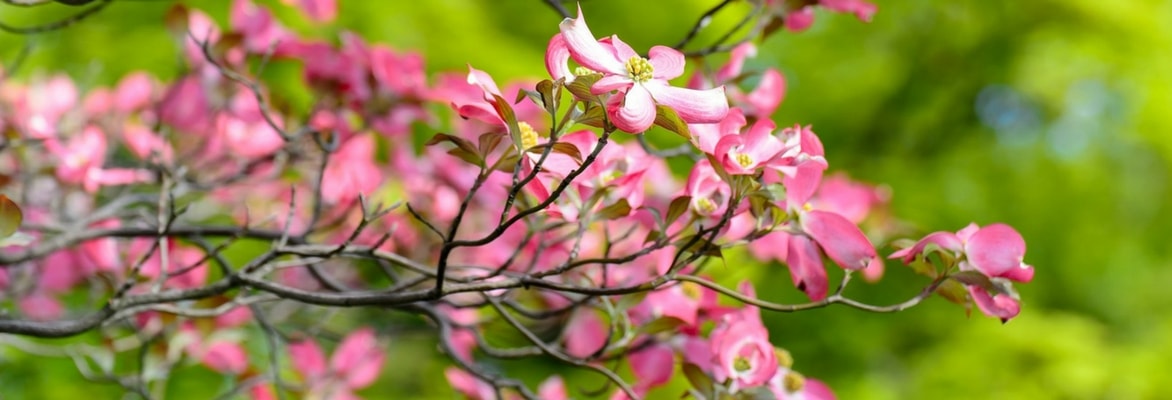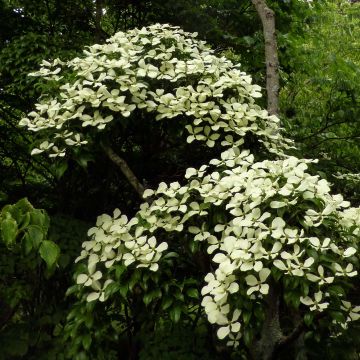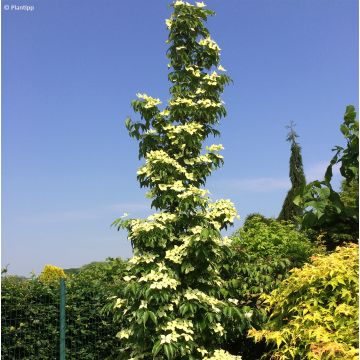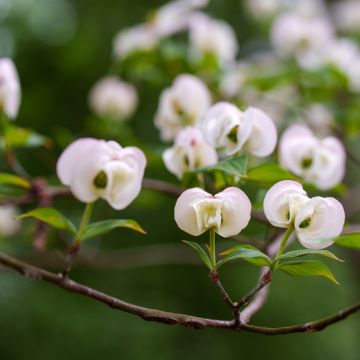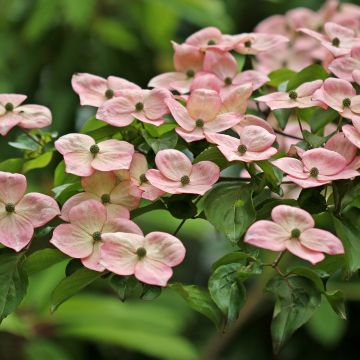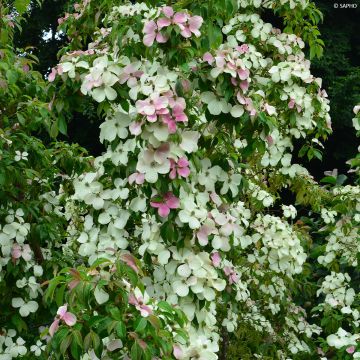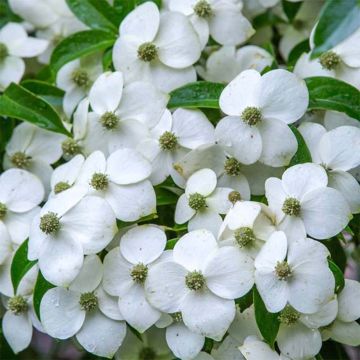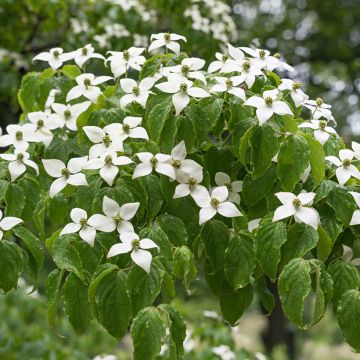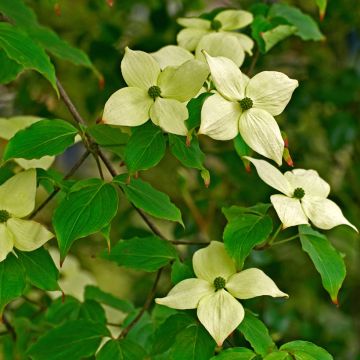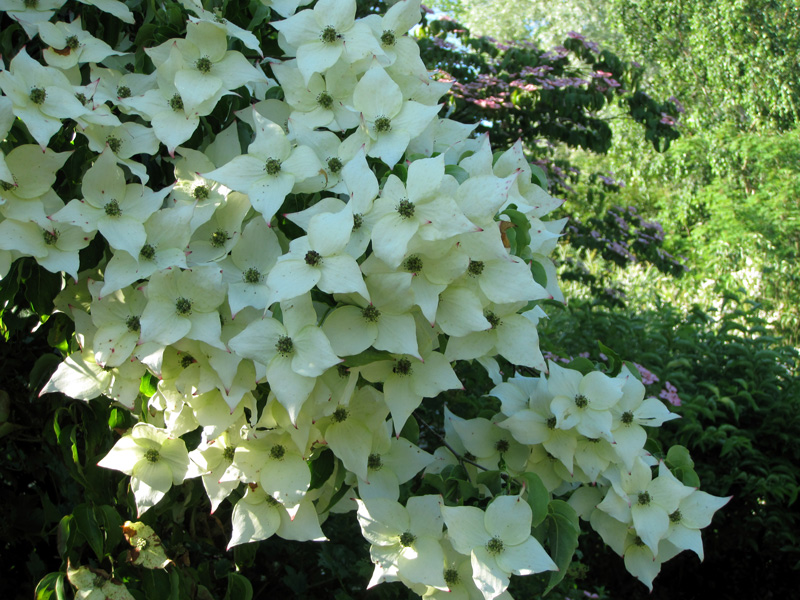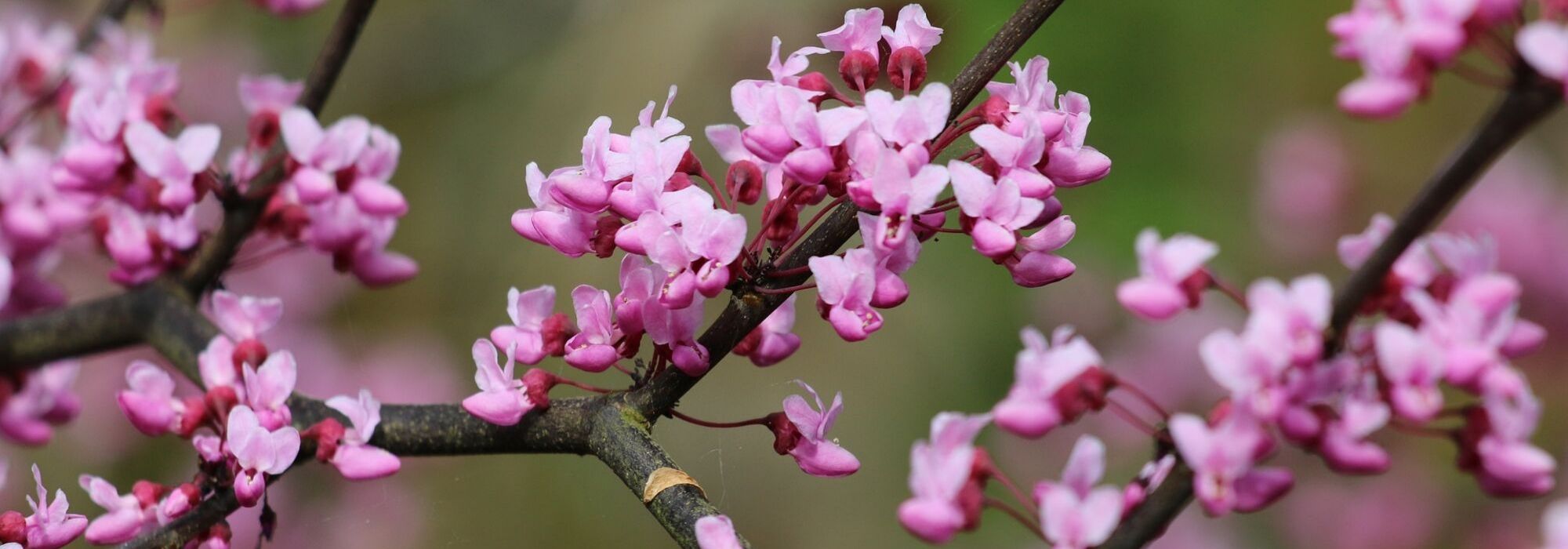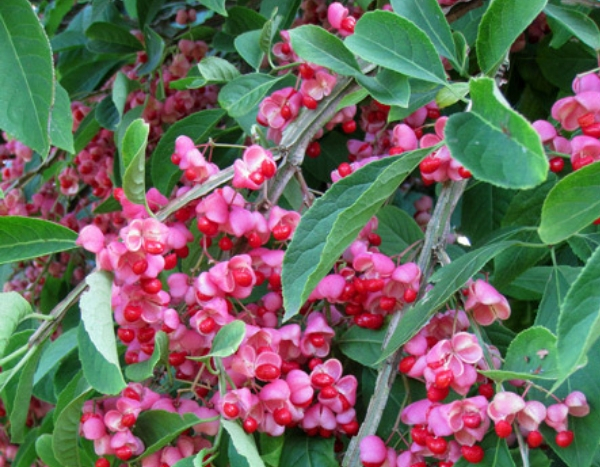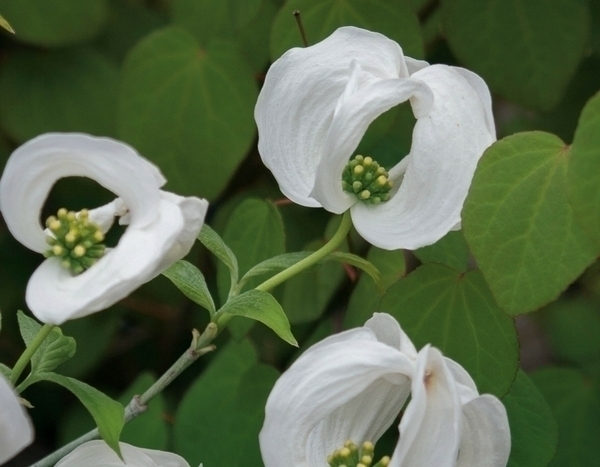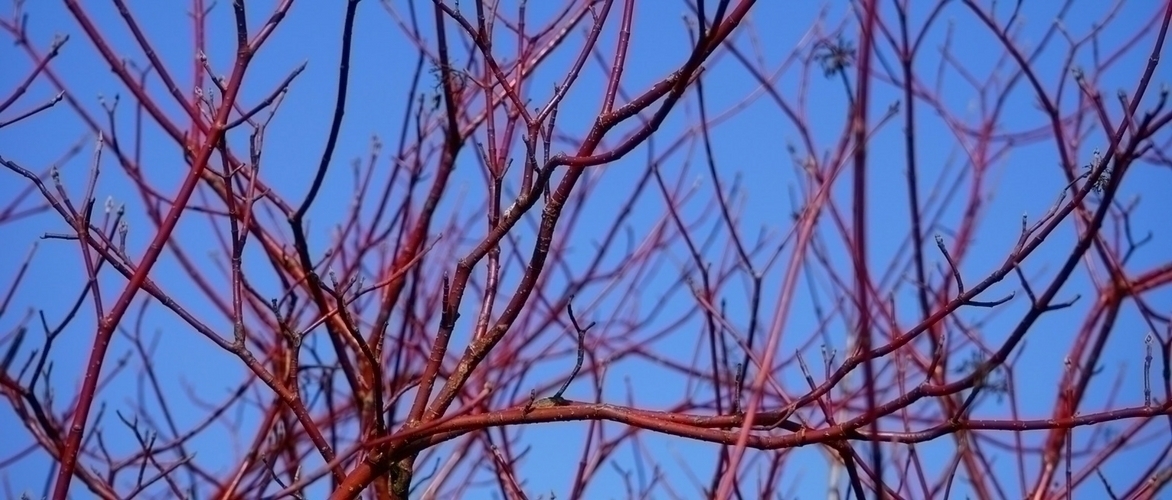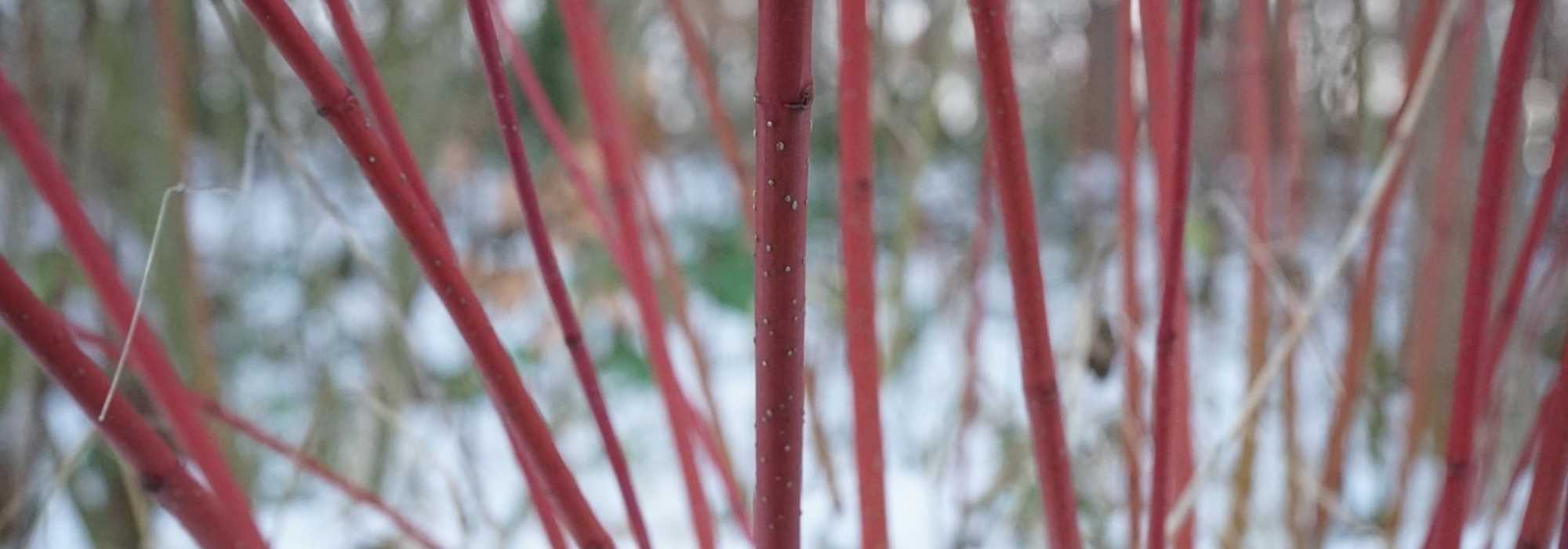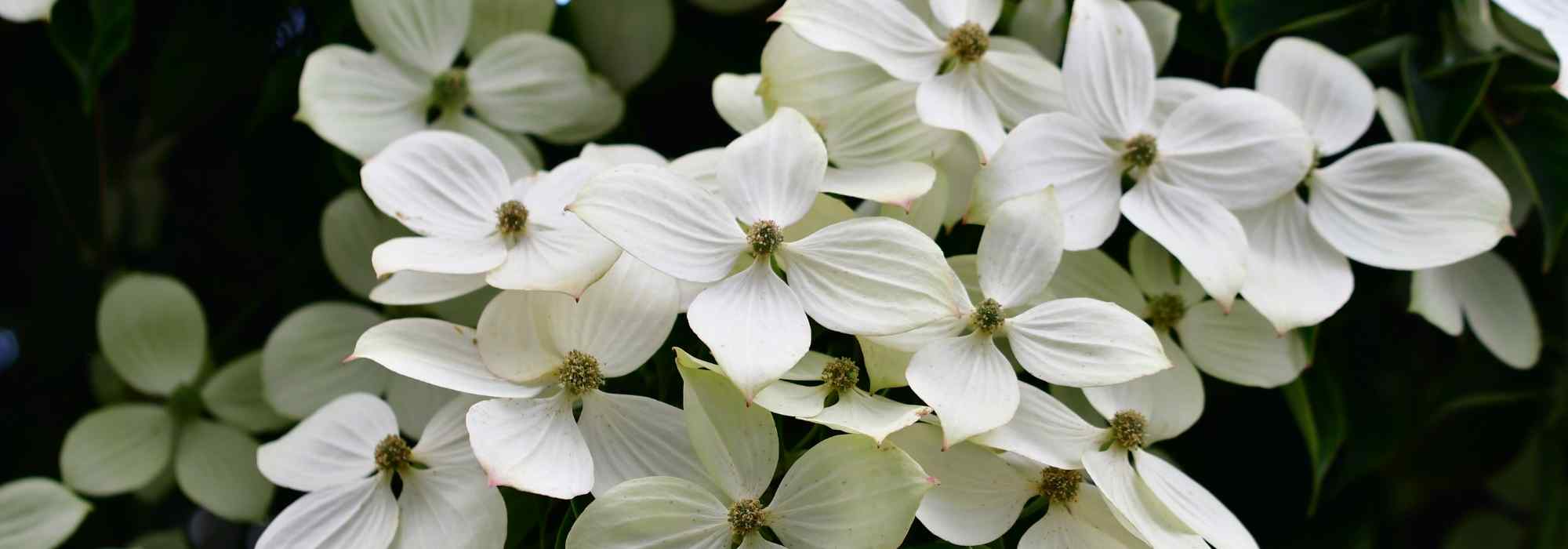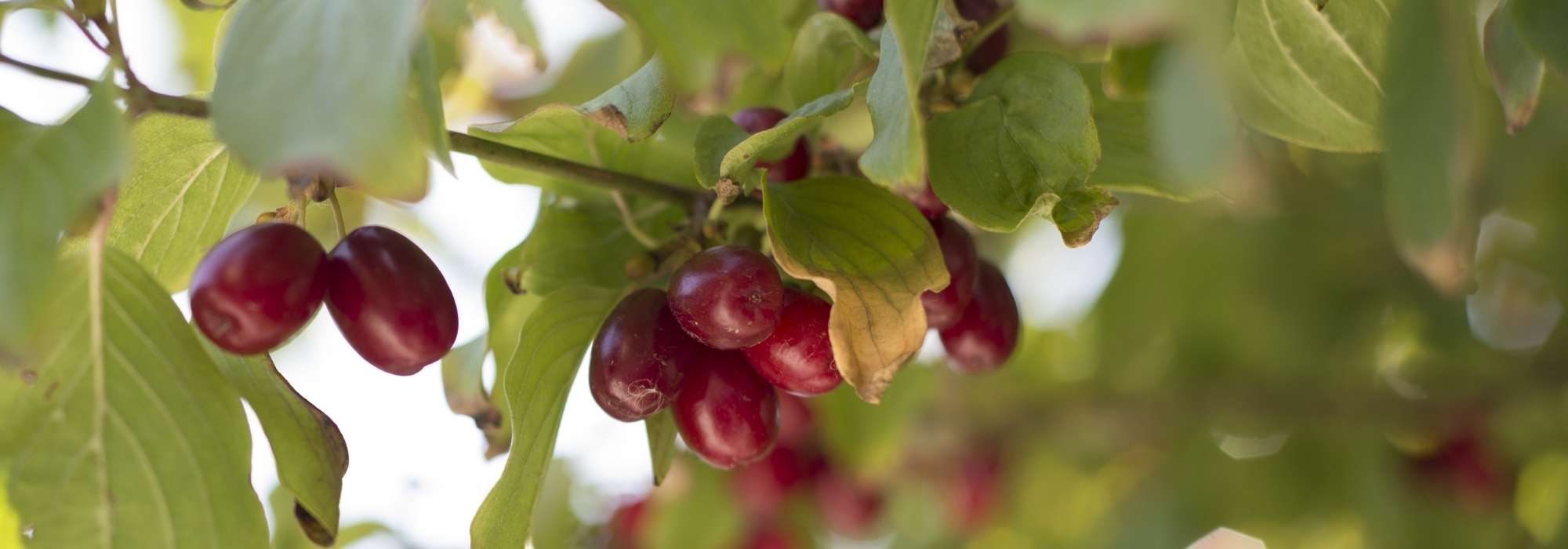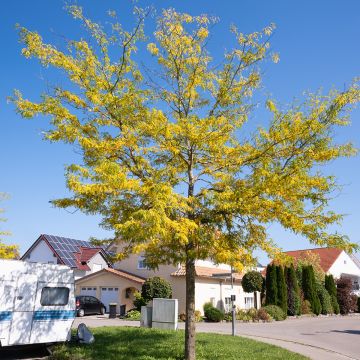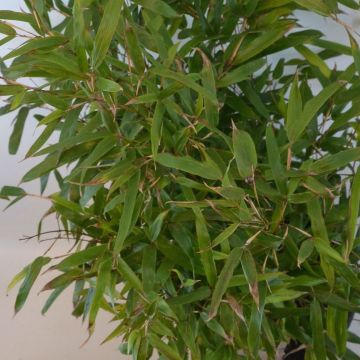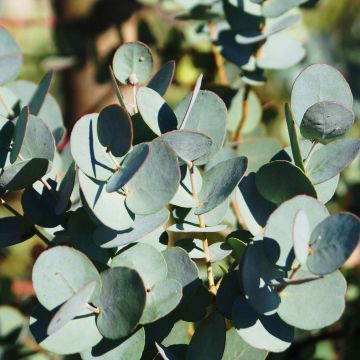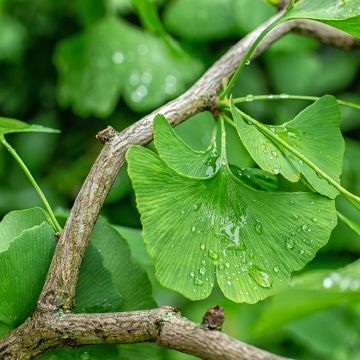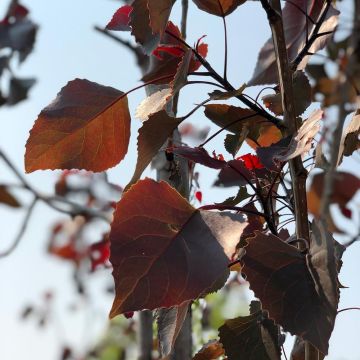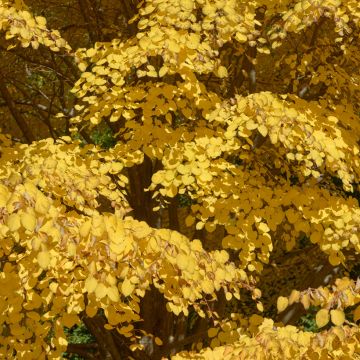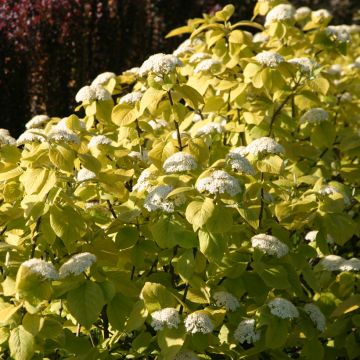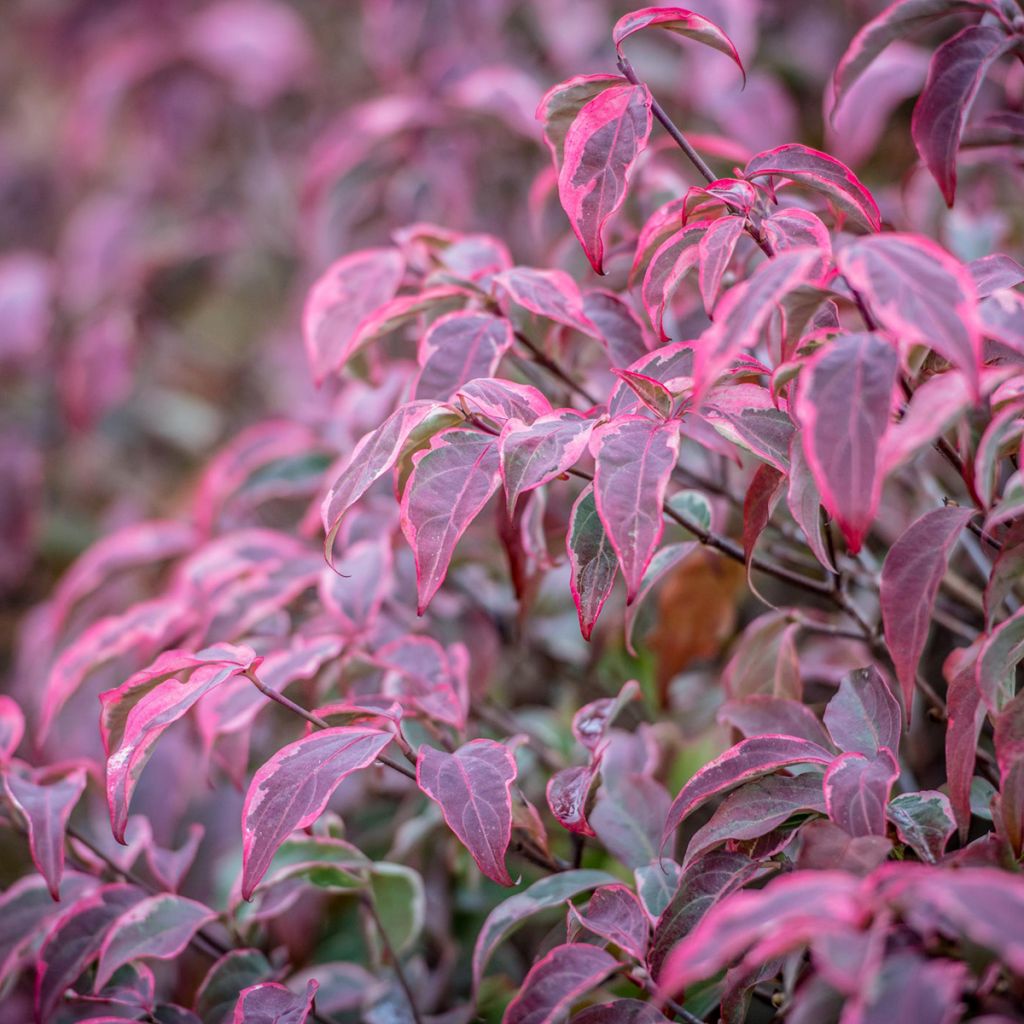

Cornus kousa Shira-yuki - Flowering Dogwood
Cornus kousa Shira-yuki - Flowering Dogwood
Cornus kousa Shira-yuki
Kousa Dogwood, Japanese Dogwood, Chinese Dogwood
Special offer!
Receive a €20 voucher for any order over €90 (excluding delivery costs, credit notes, and plastic-free options)!
1- Add your favorite plants to your cart.
2- Once you have reached €90, confirm your order (you can even choose the delivery date!).
3- As soon as your order is shipped, you will receive an email containing your voucher code, valid for 3 months (90 days).
Your voucher is unique and can only be used once, for any order with a minimum value of €20, excluding delivery costs.
Can be combined with other current offers, non-divisible and non-refundable.
Home or relay delivery (depending on size and destination)
Schedule delivery date,
and select date in basket
This plant carries a 24 months recovery warranty
More information
We guarantee the quality of our plants for a full growing cycle, and will replace at our expense any plant that fails to recover under normal climatic and planting conditions.
Does this plant fit my garden?
Set up your Plantfit profile →
Description
The Cornus kousa 'Shira-yuki' is a new selection that stands out for the design of its foliage and flowering. This Japanese dogwood is adorned with very elongated leaves, of a fairly light green marginated with white. This variegation is ornamental throughout the season and when autumn arrives, the entire foliage takes on beautiful shades of pink and red. In spring, white star-shaped flowers appear with four branches, narrower than in other varieties. They are followed by decorative red-orange fruits, adding to the appeal of this bush. Very hardy and less demanding to grow than its cousin Cornus florida, this beautiful bush undoubtedly deserves to be planted more, especially as it remains compact.
The Dogwood belongs to the small family of Cornaceae, which, after several revisions of the classification, now only includes the genera Cornus and Alangium. Cornus kousa is a tree with small growth or a large bush, native to Japan, China, and Korea. Its architectural silhouette, supported by layered and horizontal branches, gives it a very Japanese look. The botanical species has given rise to several horticultural varieties, the result of breeders' work.
'Shira-yuki' is a variety that stands out easily from the others and will appeal to lovers of originality. It forms a compact bush, with relatively slow growth, reaching approximately 2.50 m (8ft) in height and 1.50 m (5ft) in width. It has a very characteristic foliage, composed of lanceolate leaves, long and rather narrow, with pointed ends. The leaf blades are a relatively pale lichen green, slightly greyish, and display an irregularly wide white margin at their periphery, creating a subtle contrast. In autumn, as the first cold weather approaches and the chemical composition of the leaves changes, pigments appear that colour the leaves red, while the white variegation turns pink. The bush then becomes a remarkable scene that attracts all eyes in the garden, at a time when flowering is quite scarce.
'Shira-yuki' blooms in May-June, with flower heads composed of a central flower surrounded by four bracts. The flower is actually a spherical cluster, made up of small clustered flowers, resembling a greenish blackberry, which then pigments into various shades of pink, while remaining discreet. It is the bracts that are admired, narrow and greenish as they emerge and margined white. Then, they turn completely white, forming a large star about ten centimetres in diameter. Their very architectural shape blends perfectly into a garden with a contemporary aesthetic. After a few weeks, the bracts fall off and the central fruits begin to form, creating small decorative, knobby spheres in shades of red-orange in autumn.
The Cornus kousa 'Shira-yuki' thrives in continental climates, with distinct summers and winters, but also performs well in milder areas. In hot regions, it should be planted in a sheltered spot away from scorching sun, such as at the edge of trees. Ornamental enough to justify planting it as a standalone on a lawn, it will also integrate well into a diverse plant bed, in the second row behind perennials or low-growing shrubs. Plant the Andromeda polifolia Compacta at its feet, a dwarf shrub with very narrow dark green foliage reminiscent of rosemary, which produces clusters of small pale pink bells from April to June. Skimmia with its superb glossy dark green evergreen foliage, will also make a beautiful foreground, with white or pink flowers depending on the variety, sometimes followed by decorative red fruits.
To extend the flowering period of your bed, consider integrating early bloomers in the background, such as Hamamelis, the fabulous Witch Hazels that will delight you with their filamentous flowers in pink, yellow, red, or orange in winter or early spring, and their splendid autumn colours. And for summer and late season, nothing beats a beautiful Hydrangea like Hydrangea paniculata Fraise Melba, whose large panicles bloom from July to October, starting white and turning pink, ending in shades of red, a true spectacle that will contrast with the variegated foliage of your Dogwood.
Plant habit
Flowering
Foliage
Botanical data
Cornus
kousa
Shira-yuki
Cornaceae
Kousa Dogwood, Japanese Dogwood, Chinese Dogwood
Cultivar or hybrid
Other Flowering Dogwood
View all →Planting and care
Originally from Japan, Korea, and China, Cornus kousa bushes thrive in continental climates and temperate zones. Extremely cold temperatures during winter can result in absent or reduced flowering. Long, hot summers promote fruit ripening. However, this bush is very hardy and can withstand temperatures as low as -20°C (1°F). It tolerates sunny exposures in areas with moderately hot summers. In hot regions, it should be planted away from scorching sun.
It prefers deep, fertile, well-drained soils that are slightly acidic or neutral (although it is not a heath plant). It greatly appreciates the thick humus found in leafy woodlands. It can tolerate clay soils as long as excess moisture is avoided, especially in winter. Plant it in a deep hole lined with clay beads, coarse sand, or gravel to ensure good drainage if necessary, in a very compact soil. Any good, balanced, and flexible garden soil is suitable. When planting, add compost and leaf mould. Mulching with pine bark will help maintain freshness in summer and promote soil acidity.
Pruning is not mandatory, but can be done at the end of winter to remove diseased or dead wood and crossing branches in order to maintain an attractive habit. During the first two years after planting, regular watering is required in summer, afterwards, it can manage on its own.
Planting period
Intended location
Care
Planting & care advice
This item has not been reviewed yet - be the first to leave a review about it.
Similar products
Haven't found what you were looking for?
Hardiness is the lowest winter temperature a plant can endure without suffering serious damage or even dying. However, hardiness is affected by location (a sheltered area, such as a patio), protection (winter cover) and soil type (hardiness is improved by well-drained soil).

Photo Sharing Terms & Conditions
In order to encourage gardeners to interact and share their experiences, Promesse de fleurs offers various media enabling content to be uploaded onto its Site - in particular via the ‘Photo sharing’ module.
The User agrees to refrain from:
- Posting any content that is illegal, prejudicial, insulting, racist, inciteful to hatred, revisionist, contrary to public decency, that infringes on privacy or on the privacy rights of third parties, in particular the publicity rights of persons and goods, intellectual property rights, or the right to privacy.
- Submitting content on behalf of a third party;
- Impersonate the identity of a third party and/or publish any personal information about a third party;
In general, the User undertakes to refrain from any unethical behaviour.
All Content (in particular text, comments, files, images, photos, videos, creative works, etc.), which may be subject to property or intellectual property rights, image or other private rights, shall remain the property of the User, subject to the limited rights granted by the terms of the licence granted by Promesse de fleurs as stated below. Users are at liberty to publish or not to publish such Content on the Site, notably via the ‘Photo Sharing’ facility, and accept that this Content shall be made public and freely accessible, notably on the Internet.
Users further acknowledge, undertake to have ,and guarantee that they hold all necessary rights and permissions to publish such material on the Site, in particular with regard to the legislation in force pertaining to any privacy, property, intellectual property, image, or contractual rights, or rights of any other nature. By publishing such Content on the Site, Users acknowledge accepting full liability as publishers of the Content within the meaning of the law, and grant Promesse de fleurs, free of charge, an inclusive, worldwide licence for the said Content for the entire duration of its publication, including all reproduction, representation, up/downloading, displaying, performing, transmission, and storage rights.
Users also grant permission for their name to be linked to the Content and accept that this link may not always be made available.
By engaging in posting material, Users consent to their Content becoming automatically accessible on the Internet, in particular on other sites and/or blogs and/or web pages of the Promesse de fleurs site, including in particular social pages and the Promesse de fleurs catalogue.
Users may secure the removal of entrusted content free of charge by issuing a simple request via our contact form.
The flowering period indicated on our website applies to countries and regions located in USDA zone 8 (France, the United Kingdom, Ireland, the Netherlands, etc.)
It will vary according to where you live:
- In zones 9 to 10 (Italy, Spain, Greece, etc.), flowering will occur about 2 to 4 weeks earlier.
- In zones 6 to 7 (Germany, Poland, Slovenia, and lower mountainous regions), flowering will be delayed by 2 to 3 weeks.
- In zone 5 (Central Europe, Scandinavia), blooming will be delayed by 3 to 5 weeks.
In temperate climates, pruning of spring-flowering shrubs (forsythia, spireas, etc.) should be done just after flowering.
Pruning of summer-flowering shrubs (Indian Lilac, Perovskia, etc.) can be done in winter or spring.
In cold regions as well as with frost-sensitive plants, avoid pruning too early when severe frosts may still occur.
The planting period indicated on our website applies to countries and regions located in USDA zone 8 (France, United Kingdom, Ireland, Netherlands).
It will vary according to where you live:
- In Mediterranean zones (Marseille, Madrid, Milan, etc.), autumn and winter are the best planting periods.
- In continental zones (Strasbourg, Munich, Vienna, etc.), delay planting by 2 to 3 weeks in spring and bring it forward by 2 to 4 weeks in autumn.
- In mountainous regions (the Alps, Pyrenees, Carpathians, etc.), it is best to plant in late spring (May-June) or late summer (August-September).
The harvesting period indicated on our website applies to countries and regions in USDA zone 8 (France, England, Ireland, the Netherlands).
In colder areas (Scandinavia, Poland, Austria...) fruit and vegetable harvests are likely to be delayed by 3-4 weeks.
In warmer areas (Italy, Spain, Greece, etc.), harvesting will probably take place earlier, depending on weather conditions.
The sowing periods indicated on our website apply to countries and regions within USDA Zone 8 (France, UK, Ireland, Netherlands).
In colder areas (Scandinavia, Poland, Austria...), delay any outdoor sowing by 3-4 weeks, or sow under glass.
In warmer climes (Italy, Spain, Greece, etc.), bring outdoor sowing forward by a few weeks.






























